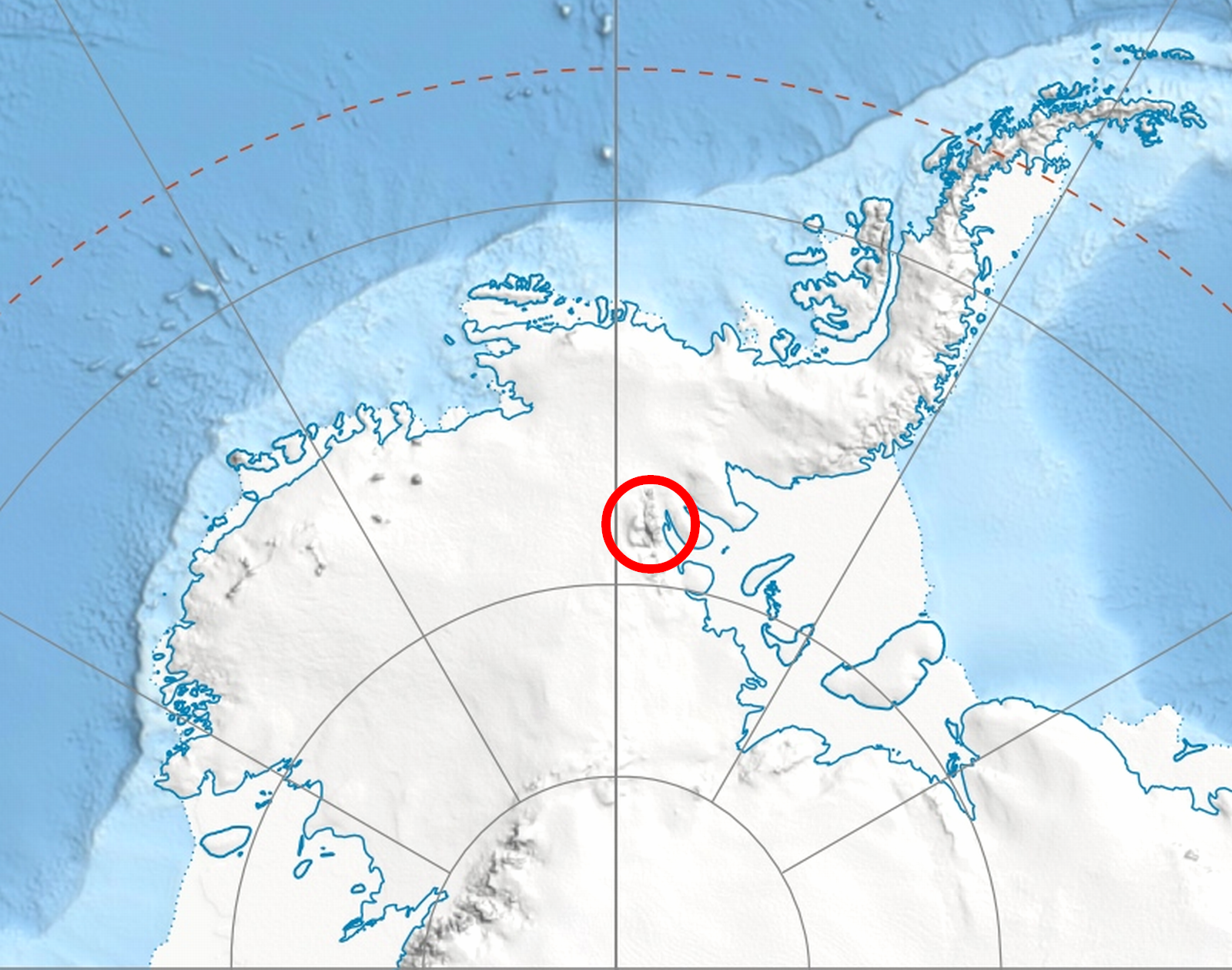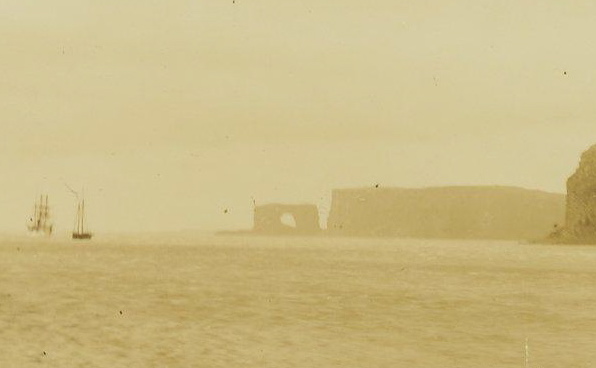|
Bruguière Peak
Bruguière Peak (, ) is the sharp rocky peak rising to Reference Elevation Model of Antarctica. Polar Geospatial Center. University of Minnesota, 2019 near the end of the side ridge that trends northeastwards from on the main crest of north-central in , |
Edmund Halley
Edmond (or Edmund) Halley (; – ) was an English astronomer, mathematician and physicist. He was the second Astronomer Royal in Britain, succeeding John Flamsteed in 1720. From an observatory he constructed on Saint Helena in 1676–77, Halley catalogued the southern celestial hemisphere and recorded a transit of Mercury across the Sun. He realised that a similar transit of Venus could be used to determine the distances between Earth, Venus, and the Sun. Upon his return to England, he was made a fellow of the Royal Society, and with the help of King Charles II, was granted a master's degree from Oxford. Halley encouraged and helped fund the publication of Isaac Newton's influential ''Philosophiæ Naturalis Principia Mathematica'' (1687). From observations Halley made in September 1682, he used Newton's law of universal gravitation to compute the periodicity of Halley's Comet in his 1705 ''Synopsis of the Astronomy of Comets''. It was named after him upon its predicted ret ... [...More Info...] [...Related Items...] OR: [Wikipedia] [Google] [Baidu] |
Antarctic Place-names Commission
The Antarctic Place-names Commission was established by the Bulgarian Antarctic Institute in 1994, and since 2001 has been a body affiliated with the Ministry of Foreign Affairs (Bulgaria), Ministry of Foreign Affairs of Bulgaria. The Commission approves Bulgarian place names in Antarctica, which are formally given by the List of Presidents of Bulgaria, President of the Republic according to the Constitution of Bulgaria, Bulgarian Constitution (Art. 98) and the established international practice. Bulgarian names in Antarctica Geographical names in Antarctica reflect the history and practice of Antarctic exploration. The nations involved in Antarctic research give new names to nameless geographical features for the purposes of orientation, logistics, and international scientific cooperation. As of 2023, there are some 20,125 named Antarctic geographical features, including 1,606 features with names given by Bulgaria. [...More Info...] [...Related Items...] OR: [Wikipedia] [Google] [Baidu] |
Composite Gazetteer Of Antarctica
The Composite Gazetteer of Antarctica (CGA) of the Scientific Committee on Antarctic Research (SCAR) is the authoritative international gazetteer containing all Antarctic toponyms published in national gazetteers, plus basic information about those names and the relevant geographical features. The Gazetteer includes also parts of the International Hydrographic Organization (IHO) General Bathymetric Chart of the Oceans (GEBCO) gazetteer for under-sea features situated south of 60° south latitude. , the overall content of the CGA amounts to 37,893 geographic names for 19,803 features including some 500 features with two or more entirely different names, contributed by the following sources: {, class="wikitable sortable" ! Country ! Names , - , United States , 13,192 , - , United Kingdom , 5,040 , - , Russia , 4,808 , - , New Zealand , 2,597 , - , Australia , 2,551 , - , Argentina , 2,545 , - , Chile , 1,866 , - , Norway , 1,706 , - , Bulgaria , 1,450 , - , G ... [...More Info...] [...Related Items...] OR: [Wikipedia] [Google] [Baidu] |
Scientific Committee On Antarctic Research
The Scientific Committee on Antarctic Research (SCAR) is an interdisciplinary body of the International Science Council, International Science Council (ISC). SCAR coordinates international scientific research efforts in Antarctica, including the Southern Ocean. SCAR's scientific work is administered through several discipline-themed ''science groups''. The organisation has observer status at, and provides independent advice to Antarctic Treaty System, Antarctic Treaty Consultative Meetings, and also provides information to other international bodies such as the Intergovernmental Panel on Climate Change, Intergovernmental Panel on Climate Change (IPCC) and the United Nations Framework Convention on Climate Change, United Nations Framework Convention on Climate Change (UNFCCC). History At the International Council for Science, International Council of Scientific Unions (ICSU)'s Antarctic meeting held in Stockholm from 9–11 September 1957, it was agreed that a committee should b ... [...More Info...] [...Related Items...] OR: [Wikipedia] [Google] [Baidu] |
Mountains In Antarctica ...
This is a list of all the ultra prominent peaks (with topographic prominence greater than 1,500 metres) in Antarctica. Some islands in the South Atlantic have also been included and can be found at the end of the list. Antarctica South Atlantic Sources * * {{DEFAULTSORT:List Of Ultras Of Antarctica Antarctica Ultras * Ultras Ultras are a type of association football fans who are known for their fanatical support. The term originated in Italy, but is used worldwide to describe predominantly organised fans of association football teams. The behavioural tendency ... [...More Info...] [...Related Items...] OR: [Wikipedia] [Google] [Baidu] |
Evans Peak
Evans Peak () is a prominent rock peak, high, standing east-northeast of Mount Ostenso in the Sentinel Range of the Ellsworth Mountains, Antarctica. It overlooks Rumyana Glacier to the north and Patton Glacier to the south. The peak was named by the University of Minnesota Geological Party to these mountains, 1963–64, for John Evans, a geologist with the party. See also * Mountains in Antarctica This is a list of all the ultra prominent peaks (with topographic prominence greater than 1,500 metres) in Antarctica. Some islands in the South Atlantic have also been included and can be found at the end of the list. Antarctica South At ... Maps Vinson Massif. Scale 1:250 000 topographic map. Reston, Virginia: US Geological Survey, 1988. Antarctic Digital Database (ADD).Scale 1:250000 topographic map of Antarctica. Scientific Committee on Antarctic Research (SCAR). Since 1993, regularly updated. References External links SCAR Composite Antarctic Gazetteer E ... [...More Info...] [...Related Items...] OR: [Wikipedia] [Google] [Baidu] |
Versinikia Peak
Versinikia Peak (, ) is the sharp peak in Ellsworth Mountains, Antarctica rising to 2918 mReference Elevation Model of Antarctica. Polar Geospatial Center. University of Minnesota, 2022 on the side ridge that trends 8.8 km from the south rib of Mount Giovinetto on the main crest of north-central northeastwards via to Debren Pass. It has partly ice-free west and southeast ... [...More Info...] [...Related Items...] OR: [Wikipedia] [Google] [Baidu] |
Mount Jumper
Mount Jumper () is a mountain high located east of Mount Viets in the central part of the Sentinel Range of the Ellsworth Mountains in Antarctica. Debren Pass separates it from the side ridge descending via Evans Peak. The mountain overlooks Ellen Glacier to the north and east, and its tributaries Patton Glacier and Rumyana Glacier to the south and northwest respectively. Mount Jumper was first mapped by the United States Geological Survey from surveys and U.S. Navy air photos from 1957 to 1959, and was named by the Advisory Committee on Antarctic Names for Major Jesse T. Jumper of the United States Air Force who participated in establishing the South Pole Station in the 1956–57 season. See also * Mountains in Antarctica This is a list of all the ultra prominent peaks (with topographic prominence greater than 1,500 metres) in Antarctica. Some islands in the South Atlantic have also been included and can be found at the end of the list. Antarctica South At ... [...More Info...] [...Related Items...] OR: [Wikipedia] [Google] [Baidu] |
Enitsa Peak
Enitsa Peak (, ) is the sharp rocky peak rising to 2816 mReference Elevation Model of Antarctica. Polar Geospatial Center. University of Minnesota, 2019 on the side ridge that trends 9.15 km northeastwards from Mount Giovinetto on the main crest of north-central Sentinel Range in Ellsworth Mountains, Antarctica. It surmounts Rumyana Glacier to the southeast and Delyo Glacier to the northwest. The peak is named after the settlement of Enitsa in Northern Bulgaria. Location Enitsa Peak is located at , which is 5 km northeast of Mount Giovinetto, 5.6 km east of Mount Viets, 7.9 km west of Mount Jumper, 4.23 km northwest of Versinikia Peak and 4.85 km north of Evans Peak. US mapping in 1961 and 1988.See also * Mountains in Antarctica < ...[...More Info...] [...Related Items...] OR: [Wikipedia] [Google] [Baidu] |
Antarctic
The Antarctic (, ; commonly ) is the polar regions of Earth, polar region of Earth that surrounds the South Pole, lying within the Antarctic Circle. It is antipodes, diametrically opposite of the Arctic region around the North Pole. The Antarctic comprises the continent of Antarctica, the Kerguelen Plateau, and other list of Antarctic and Subantarctic islands, island territories located on the Antarctic Plate or south of the Antarctic Convergence. The Antarctic region includes the ice shelf, ice shelves, waters, and all the island territories in the Southern Ocean situated south of the Antarctic Convergence, a zone approximately wide and varying in latitude seasonally. The region covers some 20 percent of the Southern Hemisphere, of which 5.5 percent (14 million km2) is the surface area of the Antarctica continent itself. All of the land and ice shelf, ice shelves south of 60th parallel south, 60°S latitude are administered under the Antarctic Treaty System. Biogeograph ... [...More Info...] [...Related Items...] OR: [Wikipedia] [Google] [Baidu] |
Kerguelen Islands
The Kerguelen Islands ( or ; in French commonly ' but officially ', ), also known as the Desolation Islands (' in French), are a group of islands in the subantarctic, sub-Antarctic region. They are among the Extremes on Earth#Remoteness, most isolated places on Earth, with the closest territory being the Heard Island and McDonald Islands territory of Australia located at roughly , and the nearest inhabited territory being Madagascar at more than in distance. The islands, along with Adélie Land, the Crozet Islands, Île Amsterdam, Amsterdam and Île Saint-Paul, Saint Paul islands, and France's Scattered Islands in the Indian Ocean, are part of the French Southern and Antarctic Lands and are administered as a separate district. The islands constitute one of the two exposed parts of the Kerguelen Plateau (the other being Heard Island and the McDonald islands), a large igneous province mostly submerged in the southern Indian Ocean. The main island, Grande Terre, is in area, about ... [...More Info...] [...Related Items...] OR: [Wikipedia] [Google] [Baidu] |







